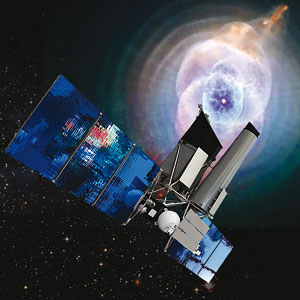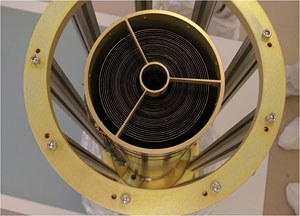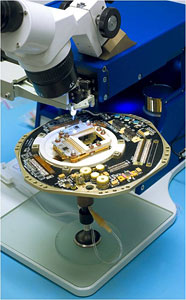Spektr-RG (SRG) is an astrophysical space observatory, aimed at studying our Universe in the X-ray band of the electromagnetic spectrum once it is in position at the Lagrange point L2 of the Sun-Earth system, 1.5 million kilometers away from Earth.
The Spektr-RG astrophysical space observatory is developed by the Russian side under the Federal Space Program of Russia, section on Fundamental Space Research, by order of the Russian Academy of Sciences with the participation of Germany.
The driving scientific goal of the Spektr-RG observatory is to map all massive structures in the observable Universe in X-rays. This map will be essential to solve the core questions of modern cosmology: How do dark energy and dark matter affect formation of the large-scale structure of the Universe? What is cosmological evolution of supermassive black holes?
Spektr-RG is expected to find about 100,000 massive clusters of galaxies during the four-year survey mode, which means literally all such objects in the observable Universe. Furthermore, it will detect around three million supermassive black holes in active galactic nuclei (AGN), along with hundreds of thousands of stars with active coronae and accreting white dwarfs, tens of thousands of galaxies with active star formation. There might even be other objects of unknown nature. Spektr-RG will also study the hot interstellar and intergalactic medium, which is a source of bright X-ray emission.
Main scientific tasks:
- to carry out an all-sky survey in the soft X-ray range (0.3–11 keV) with outstanding sensitivity;
- to perform a detailed study of selected astrophysical objects during subsequent observations in the harder energy range up to 30 keV.
Spektr-RG carries two unique instruments, the eROSITA and ART-XC X-ray telescopes. Both exploit the principles of grazing incidence imaging X-ray optics:
- ART-XC telescope (Russia) is built by the Space Research Institute of the Russian Academy of Sciences (IKI) and Russian Federal Nuclear Center.
- eROSITA telescope (Germany) is built by Max Planck Institute for Extraterrestrial Physics (MPE).
The telescopes are mounted onboard Navigator space platform built by Lavochkin Association (Russia) adapted for the tasks of the project.
The launch is planned in June 2019, from Baikonur, using Proton-M launcher and DM upper stage.
Further information is available on the project’s official web page (in Russian) and eRosita's official web page, hosted by Max-Planck's Institute for Extraterrestrial Physics

Spectrum-RG. Artist's view (c) IKI

One of the mirror systems for ART-XC (c) IKI

Assembling the electronics unit for ART-XC detectors (c) IKI
|
|

